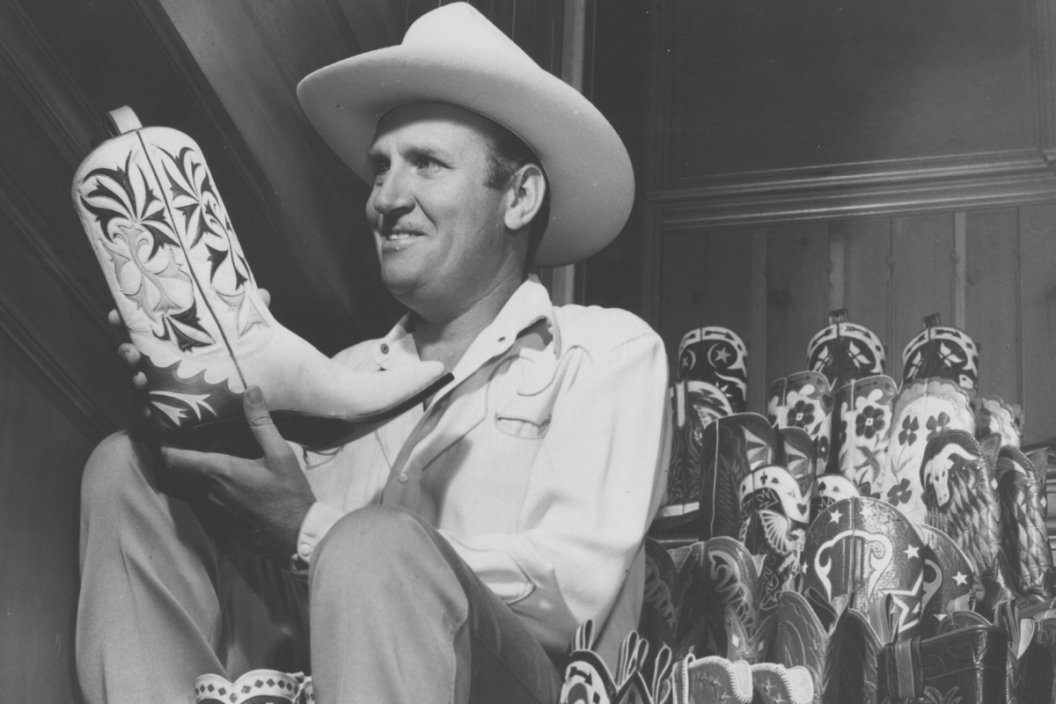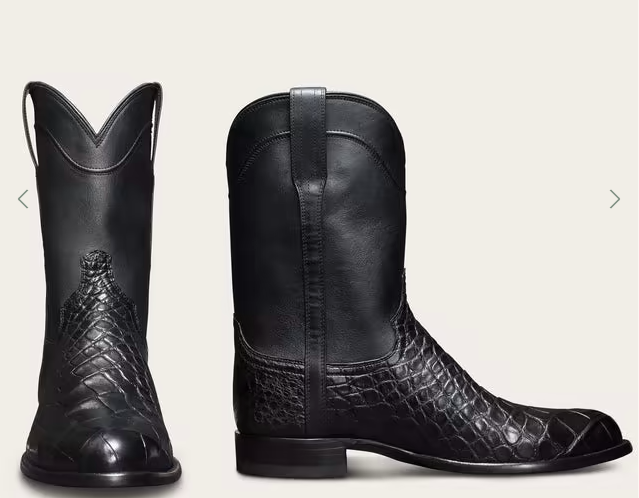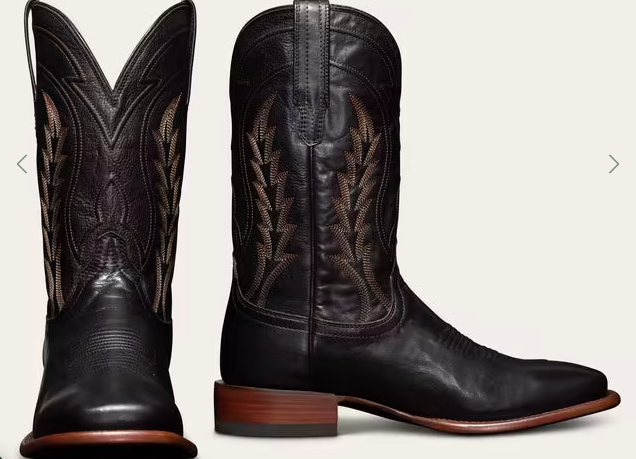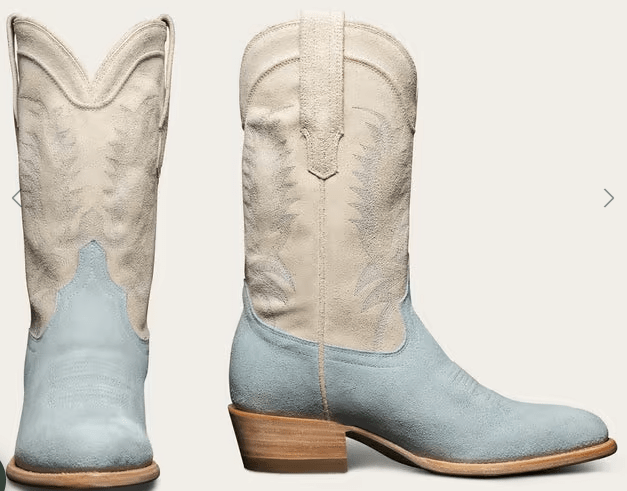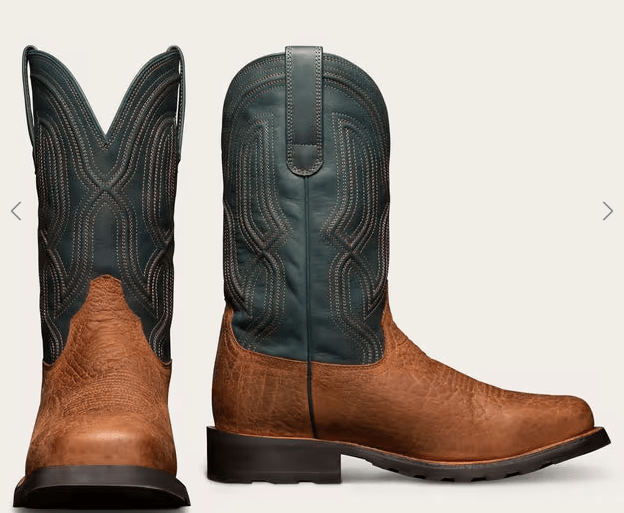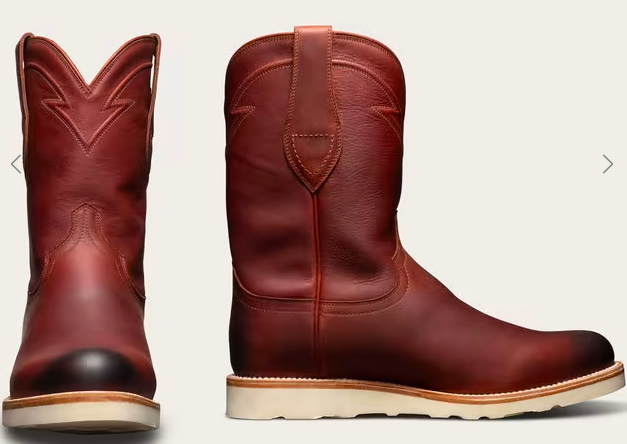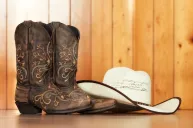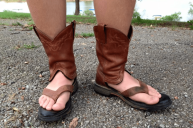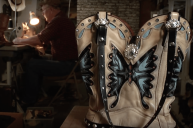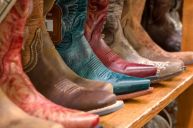Where would cowboys be without their boots? The archetypal footwear of choice in western wear and beyond, thanks to their melding of form and function, cowboy boots both draw from and continue to make history and stay popular and beloved by those who rope and ride professionally as well as those who just want to look like they do or pay homage to ranchers, herders, rancheros and vaqueros.
Where Did Cowboy Boots Come From?
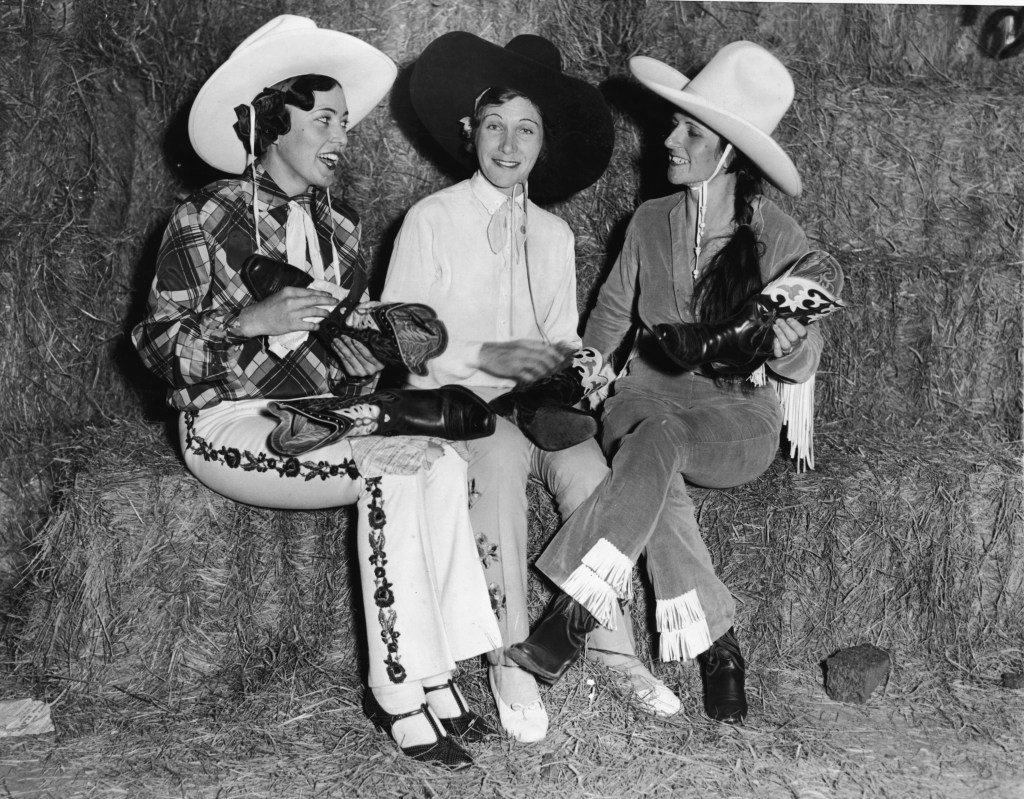
Three American cowgirls, from left, Lucyle Roberts (1909 - 1995), Alice Greenough (1902 - 1995), and Reine Shelton (1902 - 1979), sit on haybales, polishing and comparing boots in preparation for a charity rodeo in Madison Square Garden, New York, New York, October 9, 1933. (Photo by FPG/Getty Images)
Cowboy boots were inspired by riding boots from a variety of cultures. One of the earliest examples of horseback riders wearing heeled boots is that of Mongolian soldiers, who sported bright red heels made of wood. It's thought that the term "well heeled," used to describe someone who is wealthy and often of some sort of nobility, comes from the heeled boots worn while riding horses. England's Northampton Museum houses a large collection of riding boots, including one dating back to 1630 with "high tops, pointed toes and 2" stacked heels." Per ShoeIQ, another early ancestor is the Hessian boot, which is named for the German city of Hesse and was first worn by German soldiers in the eighteenth century. Hessian boots are generally made of polished leather and decorated with tassels, featuring a slight heel and a semi-rounded toe. Like other workwear that came before and after, Hessian boots were adopted by fashionable members of society in Regency England and made their way to North America during the Revolutionary War. Another, even closer relative of the cowboy boot is the Wellington boot. Wellington boots are named for Arthur Wellesley, First Duke of Wellington, who in 1815 defeated Napoleon at the Battle of Waterloo. Wellingtons were constructed via four pieces, as are cowboy boots, featured low cut, stacked heels, and ended at the wearers' calves. They, too, became extremely fashionable in English society and colonists brought them to North America.
Mexican vaqueros consistently influenced what would become North American Western wear and their boots are part of this history. The Smithsonian's History Explorer notes that vaqueros, who were generally native Mexicans who had adopted the tradition of cattle driving via horseback from Spanish colonists in the 1500s, started wearing spurs over their riding boots in the mid-1800s, the small, wheeled spikes used to communicate with and direct horses by running them over their sides while riding. Vaquero boots were shorter and flatter than what became cowboy boots, and generally featured rounded toes. The design is still popular today, but tends to be lumped in as just another style of cowboy boot (via Cowboy Boot Hub).
As reported by Texas Monthly, during the great cattle drives that took place between 1866 and 1890, cowboys took their boots, which by that time were amalgamations of all of these influences, and asked shoemakers to create "boots with a slimmer design, higher heels, more rounded toes, and a sturdier instep than were available at the time." Several cobblers are credited with inventing the cowboy boot. Per the March/April 2000 issue of American Cowboy, T.C. McInerney opened a shop in Abilene, Kansas, "the first cowtown," and sold high heeled boots with red tops for $12 to $20. Coffeyville, Kansas became known for "Coffeyville boots," which featured then-unusual higher heels and sharper toes, made by cobblers William Bright and John Cubine in the 1870s.
According to the Kansas Historical Society, cobbler Charles Hyer, the son of a shoemaking German immigrant, reportedly took an order in 1875 from a cowboy on his way home to Colorado from the Kansas City stockyards. He wanted boots "with a pointed toe that would slide more easily into a stirrup, a high, slanted heel that would hold a stirrup, and a high top with scalloped front and back so he could get in and out of his boots more easily." The resulting boots were a hit and word spread, allowing Hyer and his brother Edward to found the Hyer Boot Company in 1880 and continue making boots for working cowhands as well as rodeo stars and movie idols like Buffalo Bill Cody, Tom Mix and Will Rogers. Hyer's offspring continued running the company until 1977, at which point it was sold to the Ben Miller Boot Company.
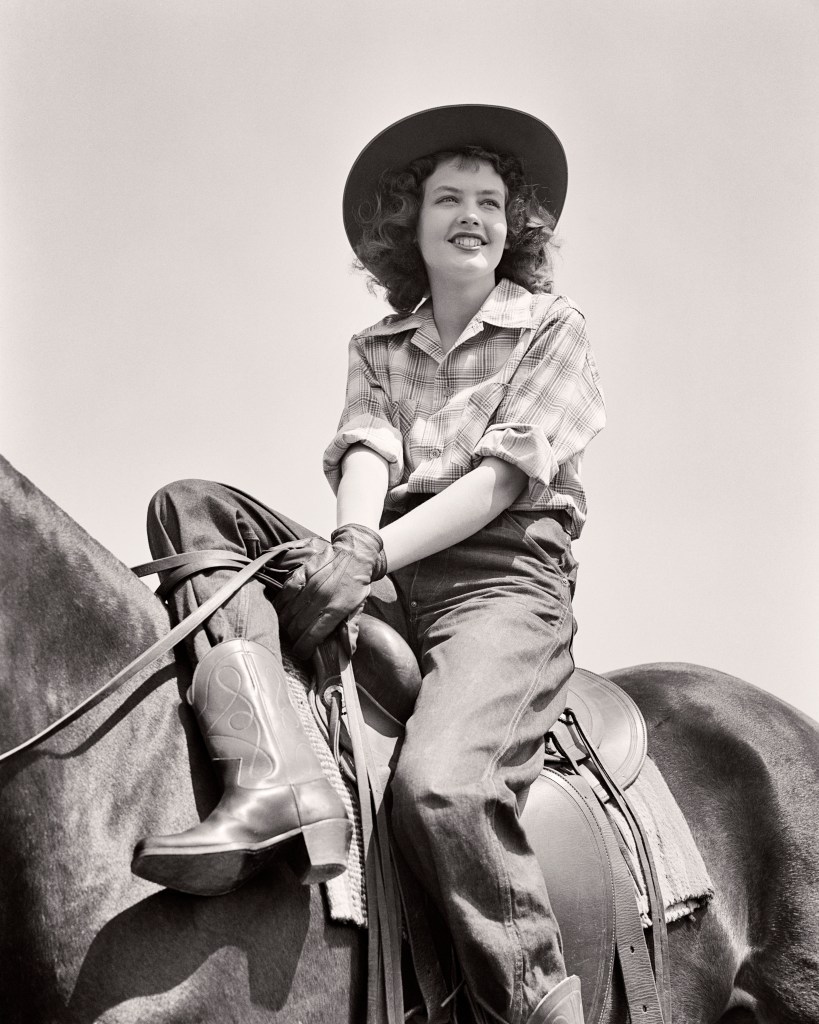
Photo by H. Armstrong Roberts/Classicstock/Getty Images
Another early inventor and innovator of the cowboy boot was H.J. Justin. Per the Justin Brands website, Herman Joseph Justin made his way from Lafayette, Indiana to Gainesville, Texas in 1877 at the age of 18, where he became an apprentice cobbler. In 1879, he moved to Spanish Fort, Texas, which was right on the Chisholm Trail, used by cowboys moving herds of cattle eastward. Justin started repairing boots from within a barbershop, eventually convincing the owner, Frank See, to give him $35 so he could launch his own company and make "the best boots in the world." See bought the first pair, and wore them for over 25 years. Justin's skills were augmented by his wife, Annie, who created a made-to-measure chart that gave Justin boots a better, more customized fit. She also made an order card, which she handed out to those passing though Spanish Fort, resulting in mail orders from far and wide. Eventually, Justin moved his family and the company to Nocona. Several of H.J. and Annie's seven children carried on their parents' booted footsteps. Sons John and Earl joined the business in 1908, which became H.J. Justin and Sons. H.J. Justin died in 1918. According to the University of North Texas Archives, daughter Enid disapproved when her brothers then decided to move H.J. Justin and Sons to the larger city of Fort Worth. She stayed behind in Nocona and started the Nocona Boot Company with her husband Julius Stelzer, who had trained with H.J. By the 1970s, Nocona Boot Company was a multimillion-dollar business. In 1981, it merged with Justin Industries, which still exists today, now owned by Berkshire Hathaway.
What Type of Cowboy Boot Should You Wear?
Different types of cowboy boots are available for different purposes. Harry's Boots breaks down the many varieties, including traditional Western boots with pointed toes, higher heels and tall shafts; riding boots designed to keep riders safely on horseback with angled heels that easily hook stirrups and smooth leather and tapered toes to avoid catching in the event of a fall; work boots with shorter heels and tractioned rubber soles; walking boots, which are less rugged than work boots but lower heeled than riding boots; roper boots, with shorter, square heels and rounder toes to facilitate chasing calves and jumping on and off horseback while roping; and exotic boots which replace traditional cowhide construction with unusual skins like alligator, eel, snake, lizard, and ostrich and are meant to be worn for special occasions with care and treated like works of art.
In terms of customizing boots, Texas Monthly broke down the various options and the images they project. The standard shaft height for boots remains 12 to 14 inches, but options range from 10 inches to 20 inches. Stitching can feature inlays and overlays, cutouts beneath or on top of the boot's leather, and tooling, which involves engraving and carving designs into the leather. Toe options include pointed ("the province of fashionistas and Hollywood"), round (for "real ranchers"), box (for "hipsters") and the squared-off French style (for "boardroom types").
Boots For Every Occasion
The Townes
The Doc
The Josie
The Midland
The Knox
Editor's Note: Products featured on Wide Open Country are independently selected by our editors. However, when you buy something through our links, we may earn a commission.
